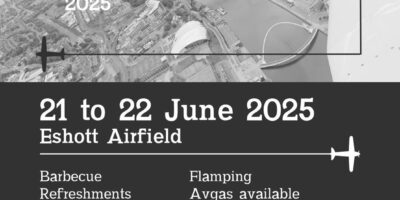I don’t think I’m particularly stupid or hard of understanding, but I do have a bit of a soft spot for things that are communicated simply and clearly, particularly when those things are related to the safety of flight. I also prefer having all relevant information in the same place at the same time, references to other bits of legislation slow down the process at best or, make people throw up their hands and walk away at worst.
I wouldn’t be surprised if there are some creators of these complex documents already rolling their collective eyes and thinking mildly uncharitable thoughts, but there’s no escaping the fact that they’re creating important stuff that mere mortals like me, may struggle to absorb and understand.
Two things prompted my reaction. The CAA communicated a General Exemption relating to the Manchester Low Level Route by way of what’s known as an ORS (Official Record Series) and the UK Aeronautical Information Service (AIS) issued a briefing on the same subject.
“If information is important enough to communicate, it should be important enough to communicate clearly”
As I plan to fly to Manchester Barton (see last month’s column) at some point in the future, I thought I’d do some reading now.
First out of the blocks, by a day, was the CAA’s ORS. In this five-point, two-page document there are two references to EU regulations, one reference to the UK AIP and three references to parts of the Standard European Rules of the Air (SERA). They all made reading the document (unless you’re a lawyer) harder than it needed to be, and none of them were handily hyperlinked.
To add another level of minor complexity, paragraph one referred to conditions in paragraph two, paragraph two referred to conditions in paragraph four, paragraph three also referenced paragraph four and paragraph four referred back to paragraphs two and three. Paragraph five was blissfully reference free, but to make up for that, the reference in paras one and four sent you to a part of the UK AIP that had yet to be updated with the necessary information. To be fair, there were five explanatory notes that followed the five regulatory paragraphs, but they contained five references to SERA, one to the UK AIP and another to the UK’s ANO.
Maybe the NATS briefing sheet referred to in a notam would be better? It does make a half-decent start by explaining that this change is necessary because the UK’s exemption to ‘SERA’s
Class D VMC Criteria’ would run out at 2359 on 25 March. It also, helpfully, published a table with the new VFR minima in Class D airspace (the bit that applies to the LLR requires you to be 1,500m horizontally and 1,000ft vertically from cloud). It then goes on to reproduce the new UK AIP text that will apply to the Manchester LLR (once it’s updated).
Unhelpfully it describes the Manchester LLR by listing eight lat and long references. Nobody plots that stuff by hand in 2020, and although there is a chart referenced, the link to that is not mentioned for another eight paragraphs, and then it’s in a form that defies my Googling skills. There are a further 750-odd words that talk about the conditions for SVFR entry into the LLR and the use of listening squawks. The ORS and the AIP are official documents, and will probably remain hard work for most, but there’s a gaping hole that a responsible regulator should be filling!
How about something like…This applies to the Manchester LLR only, not the rest of Manchester or Liverpool’s controlled airspace. The LLR is easy to find on SkyDemon, it’s to the east of Liverpool and the west of Manchester. It extends from the ground to 1,300ft AMSL on the Manchester QNH (ATIS is on 128.180). There are no good line features, so use a GPS. VFR conditions mean you need 5km visibility, and in Class D airspace you should stay 1,000ft vertically from cloud, so a cloud base of 1,500ft will have you at 500ft to stay legal. If the cloud is lower you can enter the LLR (and only the LLR!) without requesting a Special VFR clearance, BUT, only during the day, only if you remain clear of cloud and in sight of the surface, only if you have 5km visibility, only if you fly at 140kt IAS or less and only if you squawk 7364 while listening out on 118.580. You’ll get no separation from other traffic, so keeping a good lookout is down to you.
If you haven’t got 5km visibility, you’ll need to call Manchester for a ‘proper’ SVFR clearance, even in the LLR, in which case the viz will only need to be a minimum of 1,500m. Although it’s not a legal requirement, you’d be a bit of a numpty not to use the available listening squawks for Liverpool or Manchester if you are so equipped, and if you don’t have a transponder (really, in 2020?) dial up the appropriate frequency anyway.
I’m not an instructor or an airspace expert, and this isn’t the definitive plain English text, it’s just an example of style, and yes, that’s a disclaimer. If the information is important enough to communicate, it’s important enough to communicate clearly. Airspace is serious stuff, and the CAA should be doing a better job by promulgating important information simply and understandably. I’ve got no idea why it doesn’t.







